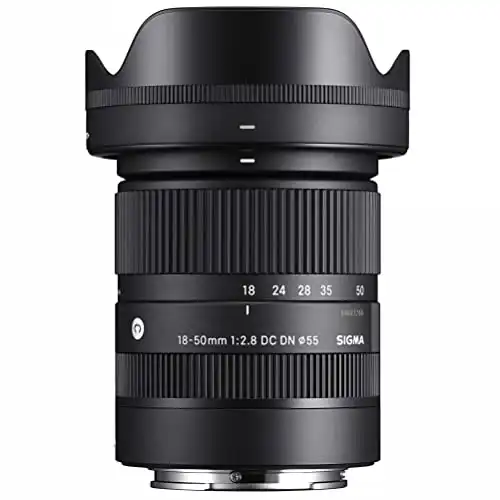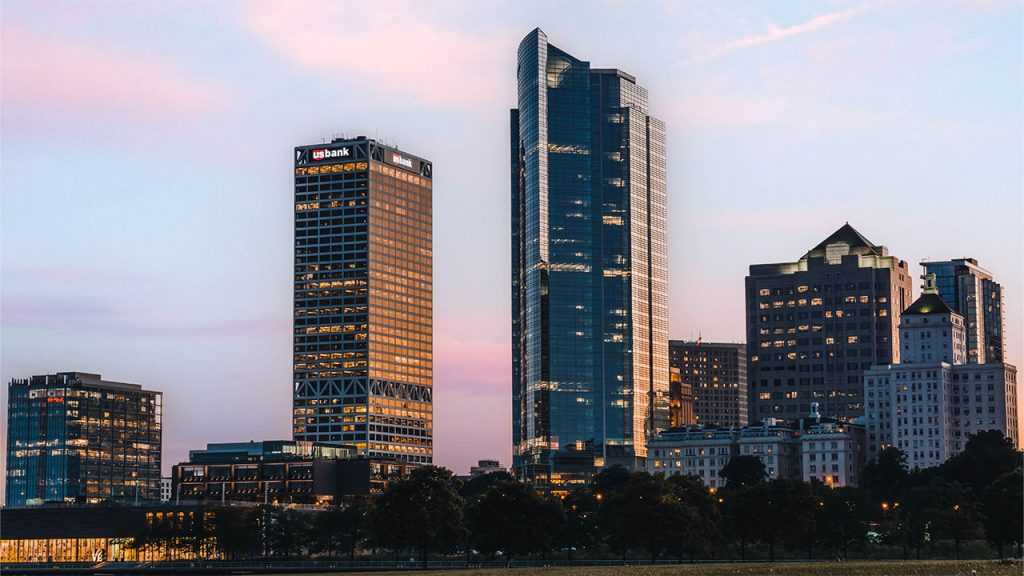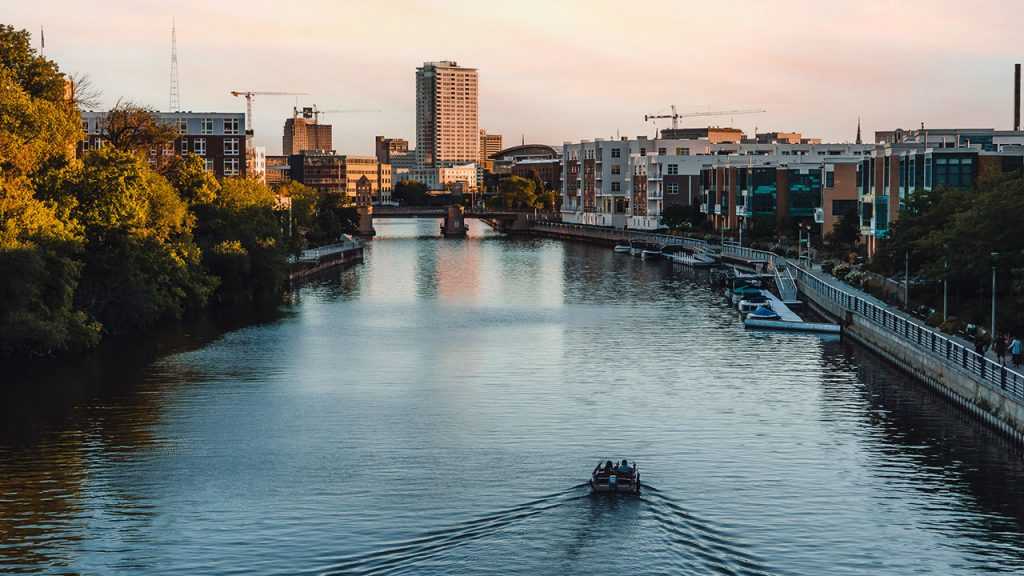Аббревиатура и технические характеристики
Маркировка объектива Sigma DC 17-50mm f/2.8 EX OS HSM расшифровывается следующим образом:
- Sigma – японская компания, производитель фототехники
- DC – объектив разработан для зеркальных фотокамер с APS-C матрицей (аналог маркировки DX зеркалок Nikon)
- 17-50mm – диапазон фокусных расстояний объектива
- f/2.8 – светосила объектива, определяет максимально возможную открытую диафрагму. В данном случае диафрагма может принимать значение f/2.8 во всем диапазоне фокусных расстояний
- EX (Excellent) – профессиональный объектив высшего класса
- OS (Optical Stabilizer) – объектив оборудован оптическим стабилизатором (аналог VR от компании Nikon)
- HSM (Hyper Sonic Motor) – в объективе установлен ультразвуковой мотор, обеспечивающий тихую и быструю фокусировку, благодаря чему, объектив будет полноценно работать на всех камерах Nikon, включая фотоаппараты начального уровня без встроенного мотора фокусировки
Кроме того, в конструкции объектива присутствуют ASP (Aspherical) – асферические и FLD (Fluorite like Low Dispersion) – низко дисперсионные элементы, подавляющие хроматические аберрации и геометрические искажения по краям кадра. По заявлениям производителя многослойное просветление оптики успешно борется с засветками и внутренними переотражениями, обеспечивая резкие и контрастные кадры даже в условиях низкого освещения. По моим личным наблюдениям резкость и контраст объектив держит хорошо, но «зайцев» ловит. Хотя, может в этом виноват UV-фильтр, накрученный на объектив.
В контровом свете резкость и контрастность практически не падают, но «зайцев» объектив ловит. ФР 20 мм, диафрагма f/22, выдержка 1/30 с, ISO 250
Еще кадр, снятый в контровом свете. ФР 50 мм, диафрагма f/4, выдержка 1/100 с, ISO 100
Технические характеристики объектива, следующие:
- Диаметр переднего фильтра – 77 мм (как у большинства профессиональных моделей)
- Кратность зума – 2,94х
- Количество лепестков диафрагмы – 7
- Диафрагма – от f/2.8 до f/22 на всем диапазоне фокусных расстояний
- Минимальная дистанция фокусировки – 0.28 м
- Максимальный коэффициент увеличения – 1:5
- Размеры – 83.5 х 91.8 мм
- Вес – 565 грамм
Объектив комплектуется удобной блендой и отличным чехлом. Бленда сидит очень плотно, потерять ее вряд ли возможно. Если одеть бленду задом наперед, доступ к кольцу фокусировки не блокируется даже на 17 мм. Чехлы, которые компания Sigma делает для своих объективов, я считаю одними из лучших. Чехол напоминает тубус из плотной ткани, только прямоугольной формы, на торцах которого внутри присутствуют толстые уплотнители, для дополнительной защиты.
В комплект входит удобная бленда и отличный чехол
На корпусе объектива расположены переключатели «AF – М» (выбор автоматической AF или ручной фокусировки M), «OS ON/OFF» (включение/отключение стабилизатора) а также блокиратор зума Lock, фиксирующий положение объектива на 17 мм фокусного расстояния.
К сожалению, в отличии от большинства объективов Nikon, Sigma 17-50mm f/2.8 EX OS HSM не поддерживает постоянный ручной контроль фокусировки. В режиме «AF» крутить кольцо фокусировки нельзя, можно повредить мотор.
По заявлениям производителя, стабилизатор обеспечивает выигрыш в 4 ступени. В моем архиве не нашлось кадров, которые могли бы это проиллюстрировать. Но, на англоязычных ресурсах встречается информация, что это заявление не далеко от истины. Кроме того, стабилизатор просто незаменим при съемке видео с рук.
Когда Sigma 17-50mm f/2.8 не присоединен к фотоаппарату или камера выключена, если объектив потрясти или просто повернуть из стороны в сторону, можно услышать шум, как будто внутри что-то перекатывается. Это не брак, а нормальное состояние. Звук издают линзы, отвечающие за работу стабилизатора, которые в выключенном состоянии не подвешены в электромагнитном поле.
Не считая этой особенности, объектив сделан очень качественно. У моего экземпляра нет никаких люфтов, резинки не растянулись, а зум не выдвигается под тяжестью собственного веса. Это несмотря на то, что я пользуюсь им уже два года, а до этого несколько лет он был в других руках. Крепление байонета – металлическое, но, к сожалению, без резинового уплотнителя.
Передняя линза объектива при зумировании и фокусировке не вращается, что позволяет без проблем использовать любые светофильтры.
Фокусировка, резкость, цветопередача, геометрические искажения и другие важные параметры
Разрешающая способность
Разрешающая способность измеряется в количестве пар горизонтальных черно-белых штрихов на 1 мм изображения, проецируемого объективом на матрицу, на графике она обозначена как величина lw/ph. На приведенных ниже графиках показано сравнение разрешающей способности на разных фокусных расстояниях и при рразных значениях диафрагмы.
Разрешающая способность на полностью открытой диафрагме
Почти всегда качество картинки при полностью открытой диафрагме — это дно, ниже которого не утонешь. Однако, несмотря на это, снимать в этом режиме иногда приходится, в частности, когда не хватает света. Посмотрим, как поведут себя объективы в этом тесте.
У каждого каждого объектива сравнивалась разрешающая способность при разных фокусных расстояниях. Синий столбик на диаграмме соответствует «короткому концу», то есть 17 мм, красный столбик — фокусному расстоянию — 24 мм (чаще всего используется для повседневной съемки), зеленый столбик — разрешающая способность на максимальном фокусном расстоянии. Разрешающая способность по краю кадра всегда ниже, чем в центре кадра. Для построения графиков использовались средние арифметические между центром и краем. Чем больше показатели, тем лучше.
Сразу нарисовались три лидера — Canon 17-55, Canon 17-40L и Sigma 17-50.
На коротком конце самый резкий Canon 17-55, на 24 мм — Sigma 17-50, на длинном — Canon 17-40L (правда длинный конец у него короче чем у конкурентов на 10 мм ![]() — в общем и целом — паритет.
— в общем и целом — паритет.
Canon 17-55 и Canon 17-40 показывают очень похожие результаты — отличия минимальны. По всей видимости это говорит о том, что «коньяк «Три звезды» и «Пять звезд» разливается из одной бочки».
У Tamron 17-50 и Sigma 17-70 дела обстоят хуже, но они опять же играют на равных между собой. У Sigma 17-70 чуть ниже третий столбик, но и само фокусное расстояние у нее больше.
Максимальная разрешающая способность
При закрытии диафрагмы качество изображения у всех объективов увеличивается. Как правило пик разрешающей способности приходится на диафрагму f/5.6 — 8. Для каждого объектива был выбран оптимальный режим, когда средняя разрешающая способность становилась максимальной для данного фокусного расстояния. Смотрим график, чем больше показатели, тем лучше.
Sigma 17-50 оказалась в этом тесте лидером, незначительно опередив Canon 17-55 (по среднему арифметическому — 2356 lw/ph против 2338 lw/ph).
Кропнутый Canon 17-55, в свою очередь, «обставил» своего коллегу по цеху Canon 17-40L. И это при том, что у 17-55 светосила f/2.8! Если зажать диафрагму до f/4 и сравнить его с Canon 17-40L, то у последнего шансов нет — Canon 17-55 более резок!
Объективы Sigma 17-70 демонстрируют неплохие результаты на коротком конце, но потом быстро «сдувается».
Tamron 17-50 по показанным результатам мало чем отличается от Sigma 17-70.
Итоги первого раунда
Объективы Canon (оба) и Sigma 17-50 выступили практически на равных. Canon’ы дают более четкую картинку на открытой диафрагме, Sigma 17-50 им немного проигрывает, однако при зажатии диафрагмы все же на самую малость опережает их! Следующей за ними идет пара Sigma 17-70 и Tamron 17-50 — их результаты тоже очень близки, но Sigma 17-70 все же оказалась чуть лучше.
Sigma 18-50DN Build, Handling, and Features
The 18-50DN will be part of Sigma’s “Contemporary” line, a designator that I’ve complained for years is pretty much meaningless. At one point it meant “cheaper” in build and price, but Sigma’s recent iSeries lenses falls under the Contemporary line, and they are beautifully made. The 18-50DN falls somewhere in the middle; it has a nice degree of build including some basic weather sealing, but is rather short on features. It has no Optical Stabilization (Tamron 17-70mm does), no AF/MF switch or Focus Hold button (Sony 16-55mm does), but Sigma has instead gone with the early Tamron on Sony route – less premium on the outside to focus on making something premium on the inside while keeping things smaller and lighter. It’s been a winning formula for Tamron, and I suspect that more people will care about having a lightweight, compact lens than will care about a missing AF/MF switch or focus hold button. You can see from this chart how much smaller and lighter the Sigma is than its competitors.
The Tamron obviously has a significantly larger zoom range along with the optical stabilizer, but even the Sony is nearly 12mm wider in diameter, nearly 24mm longer, and weighs 204g more. That’s a very meaningful difference. I like that Sigma has chosen a path that gives it a distinct role in the hierarchy of choice.
The 18-50DN is a mixture of metals and “thermal composites” (high grade engineered plastics) in construction, and the construction feels quality in the hand. It is built around a metal mount.
There is a weather sealing gasket at the lens mount, but, like other Contemporary lenses, I don’t think there is any internal seal points.
As noted, there are two rings on the lens. The closest to the lens mount is is the focus ring, which is fairly narrow (10mm), ribbed, and moves smoothly. It is has light damping and doesn’t have a lot of feel, but it gets the job done without any observable issues.
The second ring is the wider (20mm) of the two, and it is the zoom ring. The zoom action is very smooth, with a single inner barrel that extends about 25mm. The inner barrel is well engineered and without any wobble.
Also included is a fairly shallow petal-shaped lens hood. It has a ribbed texture section to help you grip it for removal and will reverse for storage.
There are seven rounded aperture blades inside, and these do a reasonably good job of maintaining a circular shape with the lens stopped down.
A look at the front of the lens shows a 55mm front filter thread along with a significant amount of glass inside; this is the huge advantage over a kit type lens with a much smaller maximum aperture value.
Like many recent zoom lenses, there is a separate minimum focus distance for wide angle (18mm) and telephoto (50mm), with interim focal lengths being on a sliding scale between them. The highest magnification (as per usual) is at the 18mm end, where you can focus as close as 121mm. Only one problem – when the lens is mounted on the camera, the distance from the sensor to the end of the lens (without the lens hood) is 95mm, leaving only 26mm of working distance between you and your subject. Here’s what that looks like:
It is basically unusable, as even without the lens hood it is almost impossible for the lens to not be shading your subject. If you add the lens hood, you actually exceed that minimum focus distance. So, in theory, you can achieve a maximum magnification of nearly 0.36x, but you are unlikely to ever achieve that in the field. Here’s what that looks like if you were able to achieve it:
You’ll see a lot of field curvature and a very small sweet spot of focus/sharpness. My advice: back up a little and get much nicer results with more like magnification in the high 20s instead.
The telephoto end doesn’t market as well, but is much more useful. You can focus as closely 30cm there, but the resulting magnification of 0.20x is much more easily attainable.
The wide open sharpness and contrast there is not off the charts, but is good enough to produce nice real-world results like this:
There is no optical stabilization on the lens, unfortunately. Those who use cameras with in-camera stabilization won’t notice, but I tried to do some handheld video work with the a6400 and was sadly disappointed with the results because of the camera shake. On the plus side, though, the light weight and compact size of the lens makes it a very natural fit for gimbal work.
I would say that the single biggest distinguishing factor here is the compact size of the 18-50DN. This sets it apart from competitors in a way it obviously doesn’t achieve with unique features. It’s a nicely made little lens that follows a familiar, well-executed Sigma formula.
Conclusion
I suspect that the Sigma 18-50mm F2.8 DC DN is going to be well received. It is a compact zoom with a nice build quality, a constant F2.8 aperture, and a very good optical performance (outside of a bit of distortion). I found it to be an effortless pairing to take out on a hike, and it provided me with one interesting image after another, with a lot of flexibility for how I framed my shots.
The 18-50DN is the kind of lens that is easy to keep mounted on a camera in the car beside you as you drive, just in case you come on scenes like this on the drive:
The close focus abilities will help it to be a good lens to mount on a gimbal or slider for video work, as on the wide end you essentially can’t exceed the focus limit. The wider maximum aperture gives you more creative options for depth of field than kit lenses or something like the Sony E 18-135mm OSS. Colors were good, and I was generally happy with the images I got during my review. I could see this being the first upgrade for many photographers, and it could easily be their only lens, too. The reasonable price point of $549 USD makes this an attainable lens for many who simply can’t afford a lens costing a thousand dollars or more. I’ve been lamenting that Sony APS-C shooters have been somewhat left out in the cold as of late, but so far 2021 has been a great year for APS-C shooters due to third party offerings from Tamron, Samyang, and now Sigma. I’ve even reviewed some great inexpensive manual focus lenses from brands like 7Artisan and TTArtisan this year. Maybe you don’t have to trade in for a full frame body yet, as lenses like the Sigma 18-50mm F2.8 DN are pretty compelling reasons to hang onto that a6xxx series camera a little longer!
A Reasonably Priced Step-Up Lens
The Sigma 18-50mm F2.8 DC DN Contemporary is easy to recommend to Sony APS-C photographers who are looking to keep things small, both in terms of kit and budget. It’s optically excellent and focuses quickly and reliably. The 18-50mm’s can notably capture shots with a 1:2.8 macro reproduction, too. The lack of full weather sealing and a fluorine coating are among its biggest weaknesses.
Sony a7R IV (APS-C crop), 18mm, f/4, 1/80-second, ISO 1000 (Photo: Jim Fisher)
The Sigma is a huge improvement over the basic E 16-50mm F3.5-5.6 that Sony typically bundles with a6000 series cameras, and its slim form pairs well with Sony’s entry-level and midrange cameras. That said, for customers on a budget, our Editors’ Choice winner continues to be the $800 Tamron 17-70mm F2.8 Di III-A VC RXD, even despite its higher price. The Tamron is a little sharper wide open, covers a broader range of angles, and includes optical stabilization, something that many of Sony’s most affordable cameras don’t offer. It’s larger and doesn’t focus quite as closely as the Sigma (its best macro reproduction is 1:4.8), but we find its extra zoom power and more robust weather sealing to be worth those trade-offs.
(Photo: Jim Fisher)
Sony’s high-end E 16-55mm F2.8 G is another Editors’ Choice winner to consider, especially if you use an a6500 or a6600 camera. It splits the difference between the Sigma 18-50mm and Tamron 17-70mm in size, but is much pricier at around $1,400. The Editors’ Choice-winning Sony E 18-135mm F3.5-5.6 remains another excellent option for photographers who prefer to step up to more zoom power, rather than brighter optics.
(Photo: Jim Fisher)
Sigma’s compact zoom is also a compelling option for the niche of L-mount photographers using a Leica CL or TL2—its size matches well and it’s available for around a quarter of the price of the Vario-Elmar-T 18-56mm F3.5-5.6 ($1,995). Although that lens covers essentially the same angles of view, it doesn’t blur away backgrounds to the same degree.
Sigma 18-50mm F2.8 DC DN Contemporary
4.0
See It
$549.00 at B&H Photo Video
MSRP $549.00
Pros
- Lightweight design
- Sharp F2.8 optics
- Close focus for 1:2.8 macro
- Quick, quiet autofocus
- Nominal focus breathing
View More
Cons
- Not fully protected from dust and splashes
- Omits anti-smudge fluorine coating
- No optical stabilization
- Raw shots require correction profile
View More
The Bottom Line
The Sigma 18-50mm F2.8 DC DN Contemporary is an affordable and very capable standard zoom for beginner photographers, with sharp, background-blurring optics and decent macro capabilities.
Like What You’re Reading?
Sign up for Lab Report to get the latest reviews and top product advice delivered right to your inbox.
This newsletter may contain advertising, deals, or affiliate links. Subscribing to a newsletter indicates your consent to our Terms of Use and Privacy Policy. You may unsubscribe from the newsletters at any time.
Thanks for signing up!
Your subscription has been confirmed. Keep an eye on your inbox!
Sign up for other newsletters
Sturdy, But Not All-Weather
The 18-50mm’s barrel is made from thermally stabilized composite—fancy words for high-quality plastics—with dust and splash protection at the mount only. The front element supports 55mm threaded filters and Sigma includes a petal-style lens hood that offers extra protection from smudges and flare. The glass isn’t protected with oil-repellent fluorine, so you need to take a little extra care when cleaning it.
(Photo: Jim Fisher)
The 18-50mm is smallest at the 18mm setting. Its inner barrel telescopes out to zoom in to tighter focal lengths, extending by about an inch. The zoom ring turns with a pleasing amount of resistance and stays in place once set. Like other zooms, the Sigma’s barrel has rubber ridges that help with grip, for example, when you’re wearing gloves in cold weather.
Focusing & Other Notes
Autofocus
Stills AF
Alrighty, so everything else looks good, but how is the autofocus on the Sigma 18-50mm F2.8? Really solid, actually.
Originally I assumed it would use the same focusing system as the Sigma trio, but after using it for a while, it seems to be even faster and more reliable than my 30mm F1.4.
Performance was nearly flawless even in low light. I rarely had shots with missed focus, and those were generally in REALLY tough high-contrast situations.
EyeAF worked fairly well, and the lens tracked VERY well with AF-C (continuous AF).
Video AF
The stepping-motor is also quite quiet. When doing a quick video test, I found that the autofocus was barely perceptible on the (crappy) onboard microphone of my a6000. I’d imagine that using an actual dedicated microphone would be even better.
Video performance was quite fast and reliable as well, and I also noticed absolutely zero focus breathing. For those with stabilized bodies, this lens could be golden for video use.
Already interested in checking it out?
Sigma 18-50mm F2.8
The Sigma 18-50mm F2.8 provides excellent AF, sharp images, and a compact build.

Check Price on Amazon
Buy from B&H

A small neighborhood music festival in Milwaukee.
Manual Focus
So, now that we’ve covered autofocus, let’s cover the art of manually focusing with your own hands.
The manual focus experience is pretty typical of a modern autofocus lens. The focus ring is well dampened and feels precise enough, but the awkward positioning (near the lens mount) made it a bit hard to grip.
On the rare occasion I switched to MF, I found that it was precise enough but, again, the positioning of the focusing ring was just weird to me.
Stabilization
Finally, let’s talk stabilization. As I alluded to earlier, the Sigma 18-50mm F2.8, unfortunately, does not offer image stabilization.
While this is certainly a downside, I’m not surprised. Adding stabilization would have added a bit of bulk (and cost) to this compact lens, plus newer Sony a6000 series cameras offer IBIS anyway.
Still, as someone who still uses an a6000, the lack of stabilization is still kind of a bummer.

Loved the lighting in this shot. The skyscrapers lit up with the sunset.
Механические характеристики
Механические характеристики объектива не имеют прямого отношения к качеству изображения, но во многом определяют срок службы объектива, удобство его в использовании, четкость работы автофокуса, стабилизации (в случае ее наличия). Результаты этого теста взяты из подведения итогов об объективах на сайте photozone.ru. Шкала оценок 5-бальная:
- 1 балл — очень плохо
- 2 балла — ниже среднего
- 3 балла — «добротный средний класс»
- 4 балла — очень хорошо, но есть небольшие придирки
- 5 баллов — идеально!
Вот так распределились оценки механической части тестируемых объективов:
Лучшим оказался Canon 17-40L, остальные участники поделили между собой второе место.
Подведение итогов
Немного о системе оценки. Место, занятое объективом в той или иной номинации соответствовало баллам, присвоенным объективу. Баллы по всем номинациям складывались. Получалось, что чем меньше итоговый балл, тем лучше. Получается, что баллы «штрафные». Чтобы получить результат, нужно вычесть эти штрафные баллы из какого-то начального числа. Это число соответствует объективу, занявшего бы во всех номинациях последнее место, то есть «нулевым уровнем», от которого будем дальше отталкиваться. Кроме того, для тестов разных были введены весовые коэффициенты от 1 (то, что можно исправить в редакторе) до 3 (критически важная характеристика):
- Разрешающая способность: 3 (если объектив «мылит», то ни в каком редакторе это не исправишь)
- Хроматические аберрации: 1 (правится в RAW)
- Дисторсия: 1 (правится в RAW)
- Виньетирование: 1 (правится в RAW)
- Механическая часть: 3 (долговечность, удобство в использовании)
- Универсальность (фокусные расстояния): 2 (важная, но субъективная характеристика)
Синий столбец на диаграмме — набранный итоговый балл, чем больше, тем лучше. Красный столбец на диаграмме обозначает среднюю розничную цену (в тысячах рублей) на момент публикации статьи.
Победителем по общему количеству баллов стала Sigma 17-50 — очень неожиданный результат! Причем обратите внимание на стоимость объектива — по соотношению цена/качество объективу Sigma 17-50/2.8 в данном классе нет равных!
Однако, сразу оговорюсь — это только цифры. Если посмотреть, отзывы о данном объективе на том же foto.ru — у кого-то «желтит», у кого-то, наоборот, «холодит», у кого-то люфтит в байонете, промахивается при фокусировке и так далее — мелочи, а неприятно. Более чем уверен, что масштаб ужаса, живописуемого в этих слухах и баснях можно смело делить на 2, однако факт остается фактом — качество нестабильно, нужно быть внимательным при выборе. Если сможете подобрать «удачный экземпляр», SIGMA AF 17-50 mm f/2.8 EX DC OS HSM станет замечательной покупкой!
Canon 17-55 и Canon 17-40L набрали одинаковое количество баллов. Однако, учитывая цену расплаты за красное колечко — сниженную светсилу и уменьшенный зум, объективу Canon 17-40/4L на кропе делать практически нечего — наиболее удачными с точки зрения цена/качество будет Sigma 17-50/2.8, а с точки зрения цена/качество+предсказуемость — Canon 17-55/2.8.
Что касается Canon 17-55, отрицательных отзывов о нем очень мало. Основой его недостаток — это конструкция, способствующая засасыванию пыли внутрь объектива. В принципе, если эксплуатировать аккуратно, бояться нечего — единичные пылинки не страшны, они не оказывают никакого влияния на качество картинки. Однако, если вы планируете работать в «пыльных» условиях, лучше все же взять Canon 17-40L — у него пылезащита намного лучше.
Tamron 17-50 выглядит «серой мышкой» на фоне конкурентов в своем классе, и по совокупности параметров может соперничать только с Sigma 17-70 — объектива из более низкого класса. Покупать Tamron 17-50 стоит лишь в том случае, если позарез нужен светосильный зум, а чуть добавить и взять Sigma 17-50 нет возможности. В остальном плюсов, кроме относительно низкой стоимости, у него к сожалению не нашлось (опять же по сравнению с конкурентами).
Sigma 17-70 заняла последнее место, что в принципе, и ожидалось. Ее следовало бы протестировать с объективми ниже классом, тогда, я уверен она бы она заняла хоть и не первое, но и не последнее место.
p.s. Данный анализ был проведен исключительно по результатам лабораторных испытаний, которые можно измерить численно. Предполагается, что все тестовые экземпляры объективов, упомянутых в статье оказались «удачными» — без фронт-бэкфокусов, перекосов ГРИП и т.д. Анализ цветопередачи, бликоустойчивости, рисунка размытия, скоростных характеристик и всего остального не проводился по причине отсутствия исходных данных.
Image Quality
Sharpness
Next up, let’s talk about sharpness. I generally don’t get very scientific in my reviews, so don’t expect any sort of MTF charts or other complicated graphs.
I usually just pixel peep to the extreme at various F-stops and focal lengths.
18mm
When shooting at the widest end of the focal range, we actually see pretty respectable performance. At F2.8, there’s a bit of moderate softness near the corners, but otherwise the whole frame looks pretty nice.
Stopping down, even just a little (to F4, for example), shows noticeable improvement around the corners. More than adequate landscapes or any other sort of wide-angle subjects. Speaking of stopping down, the lens produces some surprisingly nice sun-stars at tight apertures.
Honestly, I’m pretty impressed here, as a lot of budget zoom lenses really fall apart when shot at max aperture near the wide end of their zoom range.

Panorama stitch of my city’s beautiful skyline.
50mm
On the other end of the zoom range we have 50mm.
I shot a LOT at 50mm F2.8 and found that while corners tended to be a little soft, centers were razor sharp. The corner softness wasn’t a big concern to me, as I was generally using this focal length for portraiture.
Still, stopping down slightly evens out the corners quite a bit, allowing for some really nice telephoto landscape potential (or panorama stitches!).
So yeah, the Sigma 18-50mm F2.8 is very, very sharp given that it’s a budget zoom lens.

50mm makes for some really nice telephoto landscapes.
Optical Quirks & Flaws
Now, we’ll look at optical flaws such as distortion, vignette and that sort of thing.
Distortion
First up, we have distortion… and yes, it’s quite heavy.
The tighter end of the zoom range (40-50mm or so) suffered from some minor pincushion distortion, but the wider range wasn’t so lucky.
At 18mm, this thing suffers from pretty substantial barrel distortion. I was able to fix a lot of it in post-processing, but I did notice some architecture shots still had a bit of bendy-ness along straight lines.
I wouldn’t let this scare you away, as post-processing can usually fix it (Lightroom has a lens profile), but I’ll include an example below for your consideration.


Distortion Uncorrected
Distortion Uncorrected (swipe)
Distortion Corrected
Distortion Corrected
Flaring
Next up, we have flaring. I didn’t have any problems with artificial lighting, being able to shoot directly into streetlights and whatnot with only minimal ghosting.
Shooting in sunlight, however, was brutal. If the sun is directly in the frame, expect some pretty major flaring.
I’ve posted two examples below. The first shot was in direct sunlight, but for the second image I angled the lens down and used my hand as a makeshift “lens hood”. You can see the massive difference in flaring.

Crazy flaring.
Much more controlled.
Vignette
Moving onto vignette next. I don’t tend to worry about vignette, but I did observe pretty poor performance.
The tighter end of the zoom range, once again, struggles very little, but at the wide end there is noticeable darkening around the corners. Stopping down remedies it.
I’d say it’s roughly a -1.5EV difference at 18mm F2.8, so it’s largely fixable in post-processing. You do run the risk of introducing digital noise though (when pushing exposure up in post).
Chromatic Aberration
Finally, let’s look at chromatic aberrations. I found VERY little issue here, even in some of my more extreme tests.
Generally, I find that shooting branches against a sunlit sky is a great test of CA performance and this lens didn’t struggle in that regard.

A pleasant evening in Milwaukee (don’t look to closely at all the noise).
Overall Optical Performance
Overall, I’m very impressed with the optical performance of the Sigma 18-50mm F2.8. Sharpness is consistent, and stopping down isn’t necessary to get beautiful edge-to-edge results.
Although distortion and flaring are pretty heavy, there always has to be sacrifices made when dealing with a lens this compact. I think those two flaws are worthy trade-offs for the compact size.
I said it before but I’ll say it again: I’m blown away by how well this lens performs given its specs, price and compact size.
Already interested?
Sigma 18-50mm F2.8
The Sigma 18-50mm F2.8 offers fabulous image quality (especially for a zoom!) along with a compact build.

Check Price on Amazon
Buy from B&H

A sunset cruise down the river.
Ease of Use
Given the fast and constant f/2.8 maximum aperture, the Sigma 18-50mm F2.8 DC DN Contemporary is a surprisingly small and lightweight lens, measuring almost 7.6cms in length and weighing in at a mere 290g / 10.2oz, yet it still manages to maintain a constant aperture of F2.8 throughout the entire zoom range.
This makes it the most compact standard zoom lens in its class, when assessed as an AF compatible, F2.8 constant aperture zoom lens for APS-C sensor cameras.
As demonstrated by the product images, it’s a great match for a small camera like the Sony A6000 that we tested it with, where it feels very well balanced.
Build quality is excellent given the affordable price tag. The lens has a plastic shell with a mixture of metallic parts and a compound material, TSC (Thermally Stable Composite), used inside.
It also incorporates a brass bayonet mount that’s supposed to be more durable than a normal metal mount. The optical elements are made of high-grade glass.
The Sigma 18-50mm F2.8 DC DN Contemporary feels solid enough in your hand, despite its mostly polycarbonate construction.
The zoom ring is generously wide and has a tactile ridged, rubberised grip band that has a smooth action.
The lens extends by about an extra 4cm when fully zoomed out to 50mm.
The focusing ring is on the narrow side and is located closer to the lens mount, making it easier to locate in a rush.
The Sigma 18-50mm F2.8 DC DN Contemporary features a stepping motor that allows for virtually silent auto-focusing, making it well-suited to video use.
Importantly, the lens is fully compatible with the «Direct Manual Focus (DMF)» system feature of Sony cameras that enables the user to instantly switch between autofocus and manual focus.
Focusing is fully internal but zooming is not, with the length of the lens changing as you zoom from 18mm to 50mm.
In use, we found the focusing system to be quiet, fast and reliable with the lens mounted on a Sony A6000 camera.
The Sigma 18-50mm F2.8 DC DN Contemporary isn’t weather-proof, other than the mount having a rubber seal, and it doesn’t have built-in image stabilisation, which are the two main concessions that it makes in order to be both affordable and small.
The lens is supplied with plastic lens caps and a plastic flower-shaped lens hood (LH582-02) — there’s no lens bag included. The filter size is 55mm.
Focal Range
At the 18mm focal length the angle of view is 76.5 degrees.
18mm
At the 50mm focal length the angle of view is 31.7 degrees.
50mm
Chromatic Aberrations
Chromatic aberrations, typically seen as purple or blue fringes along contrasty edges, are well controlled with this lens.
Vignetting
With the Sigma 18-50mm F2.8 DC DN Contemporary wide open at f/2.8, you can see some noticeable light fall-off in the corners. Stopping down helps, although to completely get rid of this phenomenon, you will need to use an f-stop of at least f/5.6 or smaller.
18mm
50mm
Distortion
There’s quite a lot of barrel and pin-cushion distortion evident in both the JPEG and RAW files which you’ll need to correct in post-processing until a suitable lens profile is released for your editing software.
18mm
50mm
Sunstars and Flare
The Sigma 18-50mm F2.8 DC DN Contemporary produces quite nice sunstars when stopped-down to f/22, as shown below, although it it a little prone to flare when shooting directly into the sun.
18mm
50mm
Macro
The Sigma 18-50mm F2.8 DC DN Contemporary doubles up as a competent macro lens, delivering almost half-size magnification and very close focusing at 18mm.
The close-focus point is an impressive 12.1cm from the film/sensor plane at the 18mm focal length (30cm at 50mm) and it has a maximum magnification ratio of 1:2.8 at the 18mm focal length (1:5 at 50mm).
Bokeh
Bokeh is a word used for the out-of-focus areas of a photograph, and is usually described in qualitative terms, such as smooth / creamy / harsh etc.
One of the reason to buy such a fast lens as the Sigma 18-50mm F2.8 DC DN Contemporary is to be able to isolate the subject from the background.
Sigma have used an iris diaphragm with 7 rounded blades for a fairly pleasing rendering of the out-of-focus highlights.
Below you’ll find some examples, but you are also encouraged to check out our sample images.
Sharpness
In order to show you how sharp the Sigma 18-50mm F2.8 DC DN Contemporary lens is, we are providing 100% crops on the following pages.
- Ease of Use
- Sharpness: 18mm
-
24mm
-
35mm
-
50mm
- Sample Images
- Lens Specs
- Rating & Conclusion
- Main Rivals
- Review Roundup



























